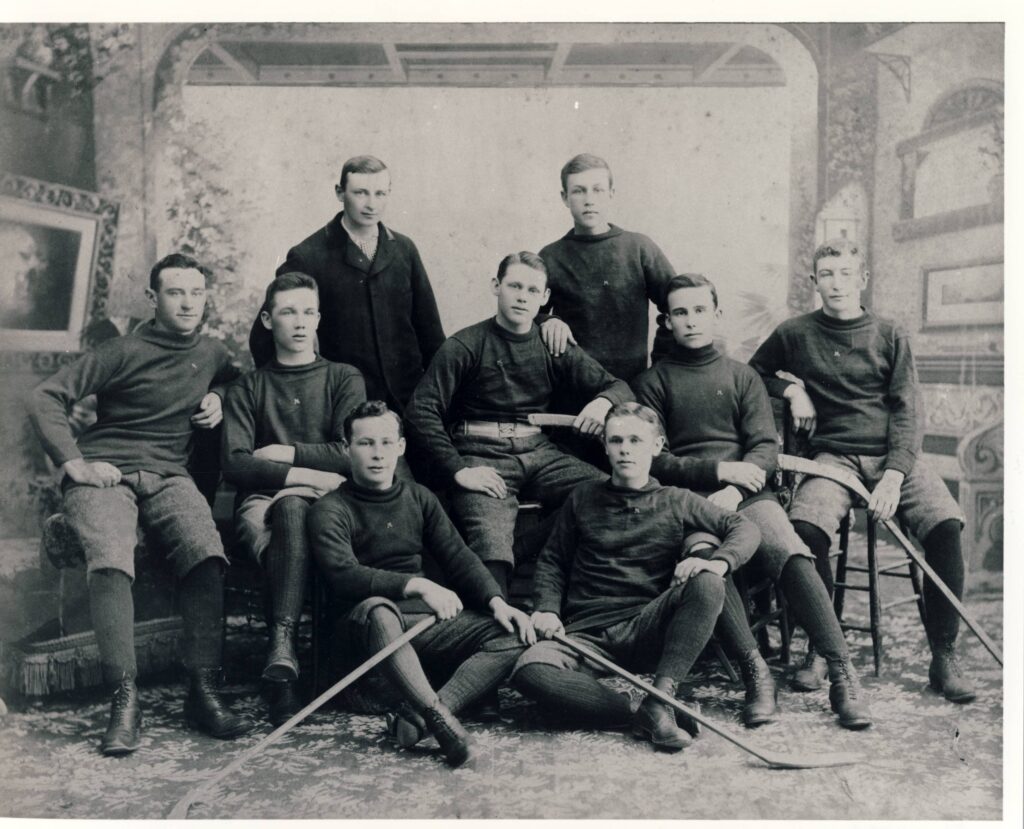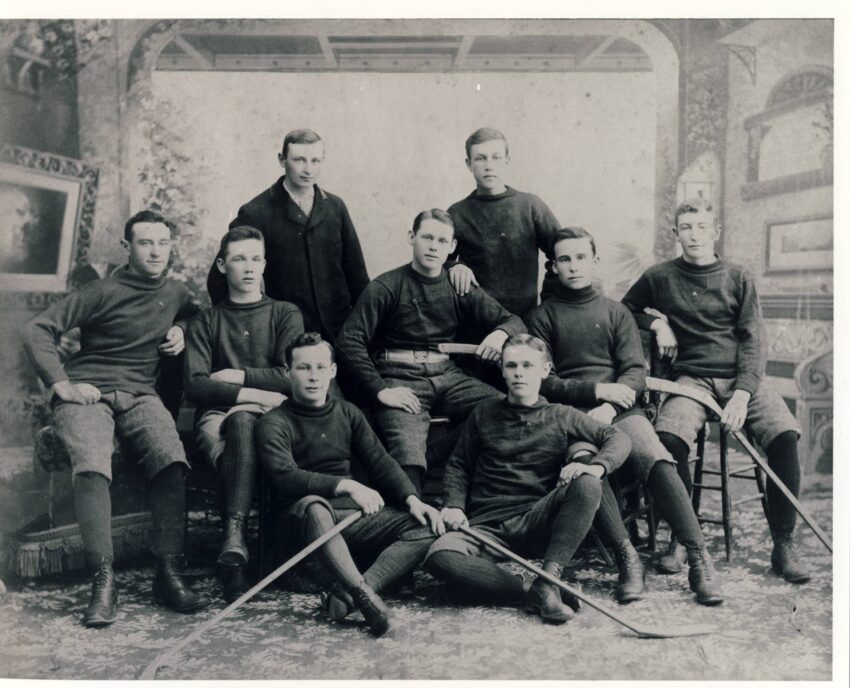Adapted from Chapter 5
On a midwinter Saturday in 1899, four Ottawa hockey teams and their supporters boarded Canada Atlantic trains for Montreal. The Ottawa Hockey Club senior and intermediate teams, a team of bakers, and Ashbury school all had matches scheduled later that day in the “Mountain City.” This “great exodus of hockeyists,” as the Ottawa Citizen referred to the excursion, exemplified the extent to which Ottawa’s hockey infrastructure had developed.
What was clear was that the Ottawa Hockey Club was not the only hockey team in this hockey mad city of 60,000 or even its most popular. There were school teams, like Ashbury, that included three future Ottawa Stanley Cup champions: Dave Finnie, Hamilton “Billy” Gilmour and his brother Sutherland. And popular club teams; junior, intermediate, and senior each with their own rabid followers.
Three such local club teams stood out in the last years of the nineteenth century: the Electrics, the Aberdeens and the Capitals. The Electrics and the Aberdeens started out as junior teams in the city league, but both had higher aspirations.
The Electrics, so named because they were sponsored by the owners of the Ottawa Electric Railway, were a local powerhouse, winning the city championship in 1893 and the Canadian junior championship the following year. They went undefeated in those two seasons. They sported fine woolen jerseys with the lettering “OER” embroidered across the breast. The most famous Electric graduate, Alf Smith, went on to be a star player and then coach with the Ottawas, and was later elected to the Hockey Hall of Fame.
In their earliest years, the Aberdeens struggled in the Ottawa city league, but by 1894 had become strong enough to enter the Amateur Hockey Association of Canada (AHAC) junior series. They continued to improve, winning the Canadian junior championship in 1901. The Ottawa Hockey Club took note. In 1902 the Aberdeens had moved up to the intermediate ranks and again the Ottawas took note only this time they recruited star player Frank McGee along with all three Gilmour brothers to their own 1903 team.
The Capitals were an entirely different story. Created in the fall of 1896 by the Capital Athletic Association, which itself had come into being only one year earlier, the new hockey club immediately began testing the establishment, that is, the Ottawas. Provocatively, they tried to recruit Ottawa Hockey Club stars Harry Westwick and Alf Smith, but the players declined. The upstart Capitals then tried to join the AHAC but again were denied. Finally, they went about setting up a league of their own, the Central Canada Hockey Association (CCHA), in which they competed with Cornwall and Brockville.
For three years, the Capitals regularly challenged the Ottawas to a showdown and were regularly rebuffed by a team that had nothing to prove and everything to lose in terms of local prestige. Winning the CCHA title in 1897, the Capitals challenged for the Stanley Cup. What was supposed to have been the best of three series ended in embarrassment for the challengers after only one game. The champion Victorias of Montreal so dominated the contest in a 15 to 2 route that organizers promptly called off the series. In the meantime, the Capitals again applied for and were denied admittance to the AHAC senior series. This time, however, they were taken into the intermediate division, which they won. After their third failed attempt to get into the senior division, the Capitals, in December 1899, joined the eastern division of the OHA senior series, with Cornwall and Iroquois. Alf Smith, whom they had coveted as a player, joined the Capitals as coach.
While the Ottawas certainly benefited from the presence of the Electrics, the Aberdeens and other second-tier organizations around the city, the main source of supply for the senior team was from within the club’s own ranks. The “Second” Ottawas had come into existence in 1890, playing local friendly matches before joining the AHAC junior series in 1892. While continuing in that series, the Seconds, or “Juniors”, also competed in 1893 in the Ottawa City League against Electrics, Aberdeens, Rideaus, Rebels and Ottawa College.
What was evident to all was that the city was producing a large pool of talent from which the many clubs could draw. Simply put, Ottawa was now a hockey city.

Future Silver Seven star, Senators coach, and Hall of Famer Alf Smith, far right crafted his game with the formidable Ottawa Electrics. In 1893, the year this photograph was taken, the Electrics won the city-league championship on a perfect record. LIBRARY AND ARCHIVES CANADA PA 117926
Source: Kitchen, Paul. Win, Tie, Or Wrangle: The Inside Story of the Old Ottawa Senators, 1883-1935. Manotick: Penumbra Press, 2008.
